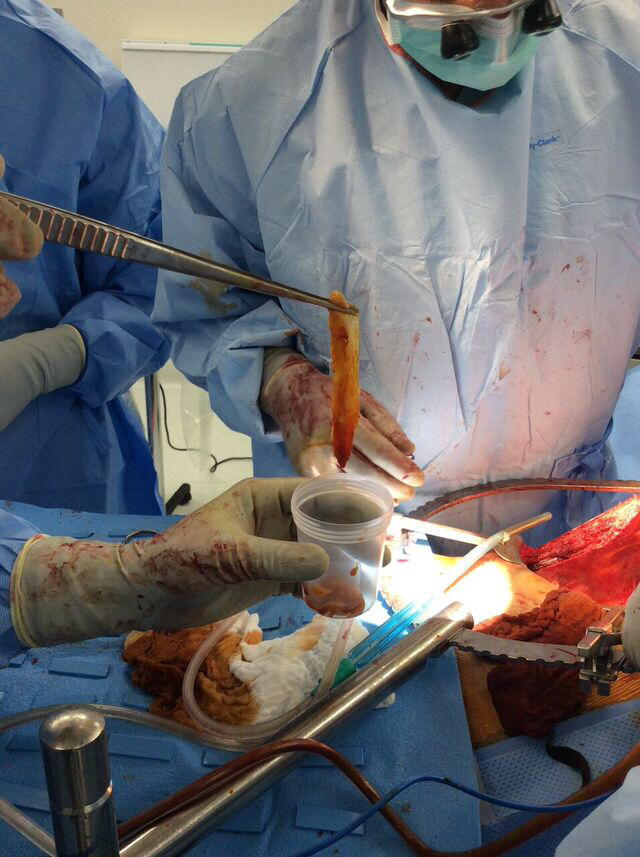Case Presentation: Hydatid cyst, also termed as Echinococcal cyst, is caused by the tapeworm, Echinococcus. Echinococcus granulosus is the most common specie to cause cystic disease. The cyst can be found in any site of the human body, with the liver being the most common area. Though uncommon in the United States, we report a case of a Middle Eastern man that presented with a non-healing wound, later diagnosed with Hydatid cystic disease.
Discussion: A 50-year old male refugee from Iraq presented to hematology clinic for follow up of his recent diagnosis of fatigue secondary to paroxysmal nocturnal hemoglobinuria (PNH). Along with PNH, patient also complained of a non-healing, right posterior chest wall wound. He had a significant medical history of multiple injuries from a roadside bomb one year prior. All of his injuries had resolved with the exception for his chest wall wound. Other pertinent medical history includes latent tuberculosis, which was being treated with isoniazid.
With no resolution of his wound, patient had a CT scan of the abdomen and pelvis which revealed a 9.4 cm cyst in the right hepatic lobe. There was communication of the cyst with the right flank and posterior abdominal wall with extension through a fistulous tract externally. Further testing yielded positive results for the Echinococcal antibody test. Wound care services commenced with treatment with albendazole and referred him for surgical evaluation.
After his surgical evaluation, patient had excision of the liver cyst. He also had abscess drainage to aid in resection of the cyst from the abdominal and chest wall. With concern for spillage of cyst into the abdominal wall, patient had copious amounts of irrigation with mixed solution of betadine and normal saline throughout the procedure. He was later discharged with albendazole to ensure eradication and prevention of recurrence.
Conclusions: Familiarity of the lifecycle of Echinococcus aids in understanding the pathogenesis of the tapeworm. With its high affinity to the liver, common symptoms include right upper quadrant pain, nausea, and vomiting. In addition to this, rupture of the cyst can lead to biliary colic, jaundice, cholangitis, or pancreatitis. Maintaining suspicion for echinococcosis when evaluating individuals from endemic countries such as South America, Middle East or, sub-Saharan Africa may prevent the morbidity and mortality associated with the disease.
